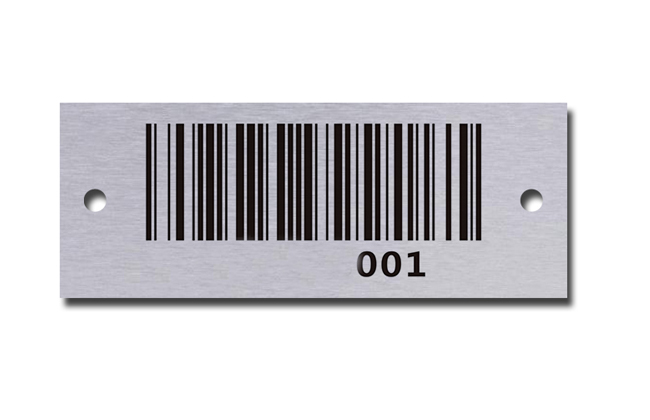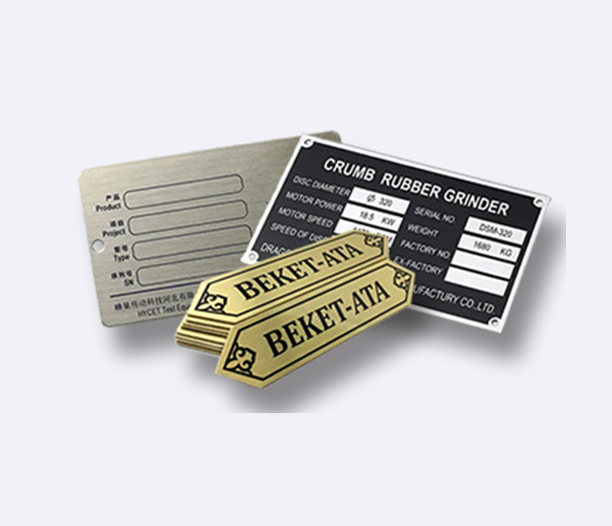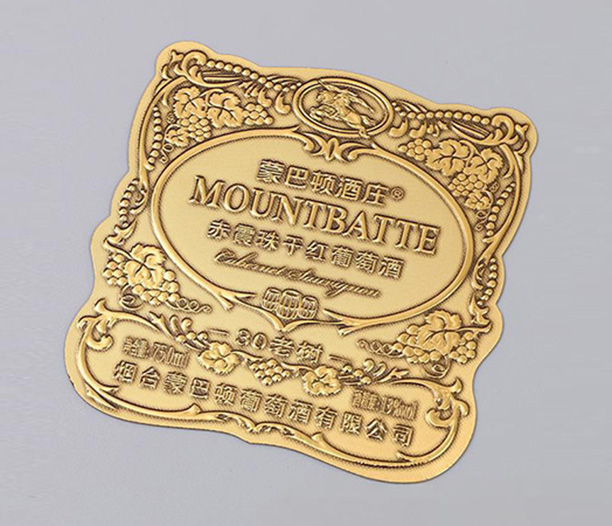If you’re working in manufacturing, oil and gas, heavy machinery, or any industry where equipment faces extreme conditions, you know labels aren’t just stickers—they’re mission-critical tools. Regular labels peel, fade, or get destroyed faster than a snowman in July. That’s where steel barcode labels come in. These heavy-duty tags are like the Navy SEALs of industrial labeling. Let’s break down why they matter and how to choose the best ones for your needs.
Why Steel Barcode Labels Outperform Traditional Labels in Tough Settings
Let’s get real: most worksites aren’t air-conditioned offices. Think chemical spills, 500°F engine rooms, subzero freezers, or equipment getting power-washed daily. Paper or plastic labels? They’d last about as long as a popsicle in hell.
Steel barcode labels solve this with:
- Corrosion resistance: High-grade stainless steel (like 304 or 316) laughs at rust, acids, and saltwater.
- Extreme temperature tolerance: Handle -40°F to 1,200°F without warping or fading.
- Scratch/abrasion proof: Survive tools, forklifts, and daily wear-and-tear.
- Permanent adhesion: Industrial adhesives bond like they’re married to the surface.
Case in point: A Midwest auto plant switched to steel labels after vinyl tags kept melting near welding stations. Two years later? Zero replacements needed. That’s ROI you can take to the bank.

Where Steel Barcode Labels Shine (Literally and Figuratively)
Not every job needs the Terminator of labels. But if you’re nodding along to any of these scenarios, steel barcode labels should be on your radar:
- Outdoor Asset TrackingEquipment in construction yards, ports, or farms faces UV rays, hail, and bird poop (yes, it’s acidic). Steel labels keep barcodes scannable through seasons.
- Chemical/Hazardous FacilitiesFrom battery plants to pharma labs, harsh solvents eat regular labels. Stainless steel? It shrugs it off like water.
- High-Traffic Industrial ZonesEver seen a label get scraped off by a pallet jack? Steel tags take the hit and keep the barcode intact.
- Regulated IndustriesFDA, OSHA, or military specs often mandate permanent identification. Steel labels check compliance boxes.
Choosing the Right Steel Barcode Labels: 5 Make-or-Break Factors
Not all metal labels are created equal. Here’s how to avoid buying glorified soda cans:
1. Material Grade Matters
- 304 Stainless: Budget-friendly for general use (moisture, mild chemicals)
- 316 Stainless: The VIP option for saltwater, chlorine, or extreme temps
2. Adhesive = The Silent Hero
Ask:
- Is the surface clean/dry during application?
- Will there be oil/grease? (Choose 3M VHB or acrylic adhesives)
- Need removable labels? (Rare, but some epoxy options allow it)
3. Barcode Printing Method
- Laser etching: Most durable for lifetime use
- High-temperature coatings: For color-coding alongside barcodes
4. Size & Shape
Match the label to the asset:
- Small machinery parts → 0.5” x 1” tags
- Large tanks → 4” x 6” plates with multiple barcodes
5. Certifications
Look for UL 969 (adhesion), MIL-STD-130 (DoD compliance), or ISO-specific ratings if required.
Installation Pro Tips: Don’t Waste Your Investment
Even Rambo needs a plan. Follow these steps:
- Surface Prep is King: Clean with alcohol wipes. Rusty surfaces? Hit it with a wire brush first.
- Test Placement: Scan the label from expected angles—no one wants to climb a ladder to read a barcode.
- Press Like You Mean It: Use a J-roller to activate adhesives fully.
- Document Everything: Map label IDs to assets in your CMMS or ERP system.
Fun fact: A Texas oil rig crew reduced mis-scans by 70% just by standardizing label heights on pipes!
Steel Barcode Labels vs. Alternatives: When Metal Isn’t the Answer
Wait—could aluminum, polyester, or ceramic tags work better? Let’s compare:
| Material | Best For | Watch Out For |
|---|
| Steel Labels | Extreme durability | Higher upfront cost |
| Aluminum | Lighter weight | Dents easily |
| Polyester | Short-term indoor use | Melts above 300°F |
| Ceramic | High-heat (e.g., furnaces) | Brittle; hard to print |
The verdict: If you need a "set it and forget it" solution, steel barcode labels win 9/10 times for harsh environments.

Real-World Success Stories
Case Study 1: Food Processing Plant
Problem: Steam cleaning destroyed plastic labels daily.
Solution: Laser-etched steel labels with epoxy edges.
Result: 18 months without a single replacement.
Case Study 2: Offshore Wind Turbines
Problem: Saltwater corroded aluminum tags in 6 months.
Solution: 316 stainless steel labels with marine-grade adhesive.
Result: Maintenance teams finally scanned barcodes without climbing slippery towers.
FAQs About Steel Barcode Labels
Q: Can I reuse steel labels?
A: Generally no—adhesives bond permanently. But you can transfer the tag to new assets by drilling out rivets.
Q: Do they interfere with RFID?
A: Metal blocks RFID signals. If you need RFID, opt for hybrid tags with isolated inlays.
Q: How much do they cost?
A: Typically $2–$15 per tag depending on size/material. Cheaper than daily label reprints!
Final Thoughts: Why Cheap Labels Cost More
Here’s the thing: steel barcode labels might seem pricey until you calculate downtime. One unreadable barcode can halt shipments, fail audits, or cause safety incidents. In harsh environments, "good enough" labeling isn’t good enough. Invest in steel tags upfront, and you’ll save headaches (and cash) long-term.
Got questions? Drop them below—we geek out over label tech!






